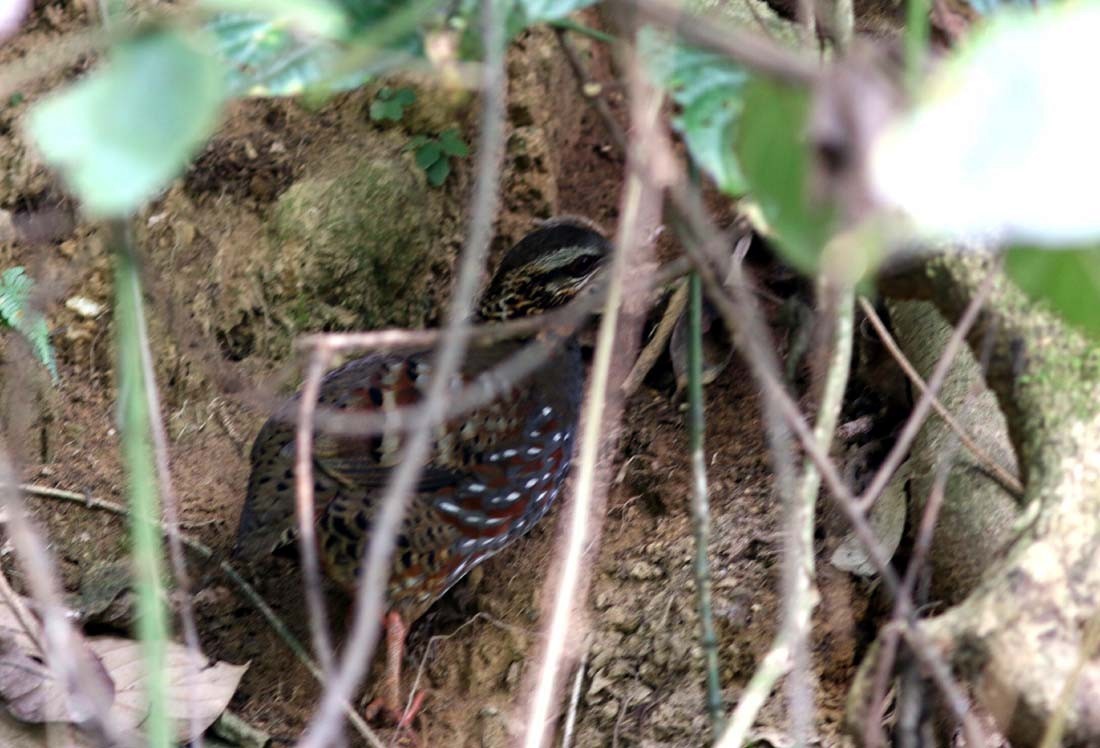Rufous-throated Partridge
A species of Hill Partridges and Green-legged Partridges Scientific name : Arborophila rufogularis Genus : Hill Partridges and Green-legged Partridges
Rufous-throated Partridge, A species of Hill Partridges and Green-legged Partridges
Botanical name: Arborophila rufogularis
Genus: Hill Partridges and Green-legged Partridges
Content
Description General Info
 Photo By Rofikul Islam
Photo By Rofikul Islam Description
The rufous-throated partridge is 26–29 cm (10–11 in) long. The male weighs 325–430 g (11.5–15.2 oz) and the female weighs 261–386 g (9.2–13.6 oz). The male has a grey forehead. The olive-brown crown and nape have black mottles. There are a whitish supercilium and moustachial curves. The throat and neck-sides are orange-rufous, with black speckles. The breast and flanks are blue-grey. The upper belly is blue-grey and the central belly is whitish. The vent is buffy-brown. The mantle, back and rump are olive-brown. The scapulars and wing coverts have chestnut, black and greyish bands. The beak is dusky-brown or blackish, and the legs are pinkish or crimson. The female is similar to the male. The juvenile bird is duller below, and its crown and flanks have brown and black vermiculations. The subspecies have different patterns on their throats. 
Size
28 cm
Nest Placement
Ground
Feeding Habits
Rufous-throated Partridge consume seeds, berries, green plant matter, and invertebrates like larvae. They often forage in groups of 5–10, exhibiting social feeding behaviors.
Habitat
The rufous-throated Partridge typically inhabits dense evergreen forests with lush undergrowth, such as areas dominated by rhododendrons, bamboo thickets, scrublands, and regions with substantial secondary growth. Its preferred environment features rich vegetation that offers ample cover. Generally, the rufous-throated Partridge is found in forested landscapes that maintain a high level of moisture and are characterized by a diverse plant community, avoiding markedly arid or overly wet conditions.
Dite type
Omnivorous
General Info
Feeding Habits
Bird food type
Behavior
This partridge feeds in groups of five to ten birds. It eats seeds, plant shoots, berries, insects and snails. Surprised birds run or fly, sometimes flying to branches like some thrushes. Birds in a covey roost and huddle together in trees, similar to babblers. Breeding has been recorded from April to July in India and from February to May in China. The male builds a scrape in bamboo, forest undergrowth or along water. The nest is lined or padded with grass. Three to five white eggs are laid. The rufous-throated partridge gives a rising series of hu-hu whistles. In a duet, the partner's call is kew-kew-kew. 
Distribution Area
The rufous-throated partridge is found in Bangladesh, Bhutan, China, India, Laos, Myanmar, Nepal, Thailand, and Vietnam. Its natural habitat is montane forests, mainly at elevations of 1,800–3,000 metres (5,900–9,800 ft). Oak forests containing laurels and rhododendrons are preferred. 
Species Status
The IUCN estimates that the species's population is declining because of habitat destruction and unsustainable hunting, but the decline is not rapid, and the range is large, so the IUCN has assessed it as a least-concern species. 

 Photo By Rofikul Islam
Photo By Rofikul Islam